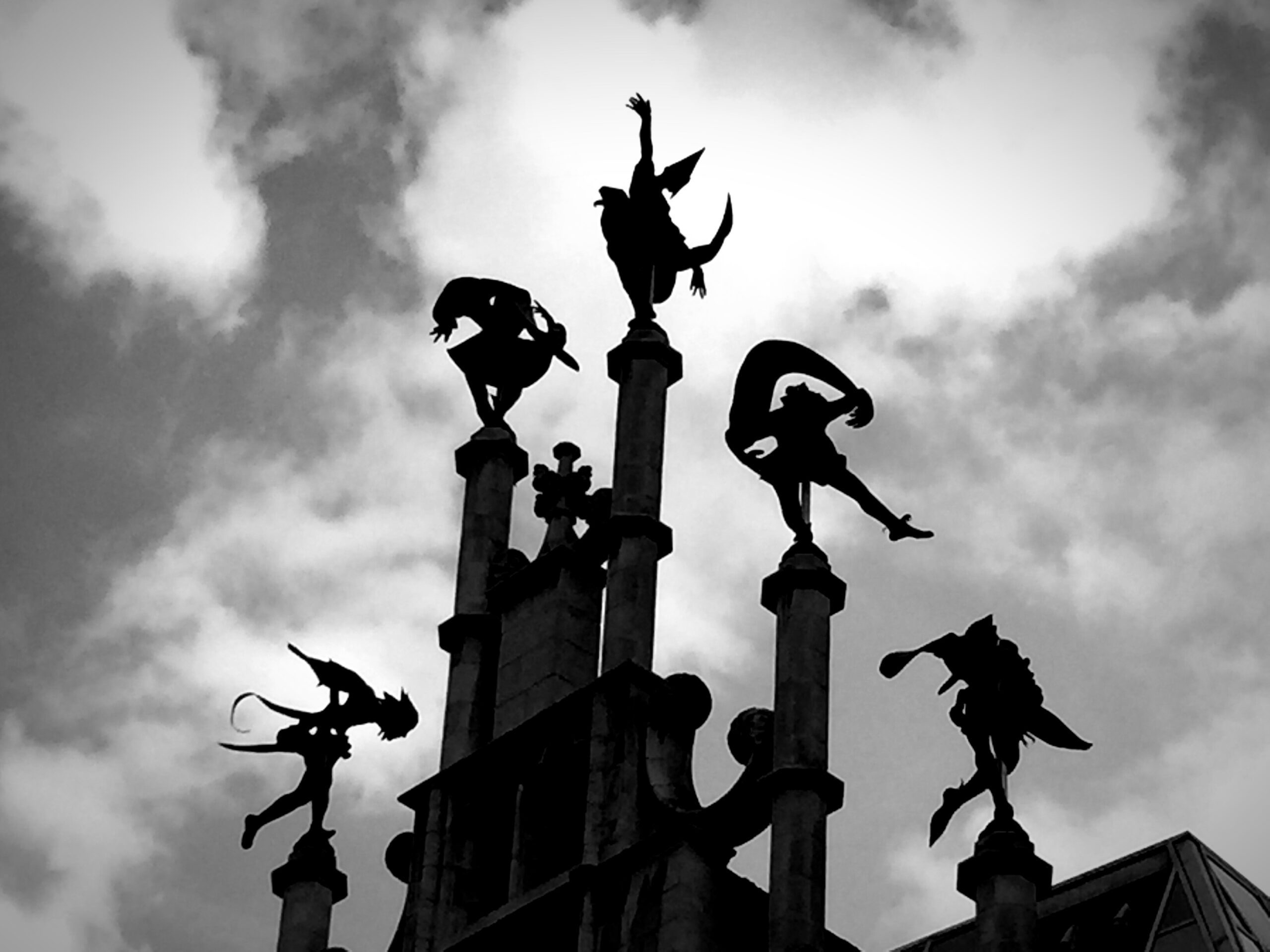
There is a second piece of daytime debris about which we have to speculate. Did Katherine look in the mirror during the previous day – and was she not pleased with her looks. We don’t know for sure—but do know from informal conversations with her that she was often unhappy with her physical appearance—particularly her nose which was prominent. Though Katherine’s nose was a major feature of her face, it was quite elegant and a bit Romanesque. By most standards of the time, her nose and overall face would be considered “beautiful” –not ugly—by most people Katherine would encounter. Many a Hollywood actress would “give a fortune” to have a face like Katherine’s. Yet, she views her prominent feature (nose) as “ugly.”
I would also like to note several other features in the dream that relate to its manifest content. First, the sky outside the building is bright red. Second, it is worth noting that there is no one else in the dream – just Katherine and the cards. Third, Katherine is confined to and supported by the hallway and walkway—even the bridge. She is also confined to a wheelchair (at least during the last portion of the dream). The garden below the walkway is noted; however, there is very little reference to this element in the dream.
The manifest elements of the dream can play an important role in its dynamic, multi-tiered property. The wheelchair, for instance, serves a multi-tiered functional purpose, suggesting both that there has been an injury or that the person in the wheelchair is old (a step toward death). The red sky serves a multi-tiered symbolic purpose, representing the red in a deck of cards (bridge), the color of sunset (death), and the color of blood (injury). French and Fromm have quite a bit to say about the way the manifest elements are used in a dream. It is all about “cognitive structure.”
Cognitive Structure
We can turn directly to French and Fromm’s words (1964, p. 38) to find out how they propose that manifest content gets employed by a dreamer to address important issues in their life:
We use the term “cognitive structure” to designate the way in which the meanings of a dream fit together and the way that they fit into the context of the dreamer’s situation in real life. We think of the cognitive structure of a dream as a constellation of related problems. In this constellation, there is usually one problem on which deeper problems converge and from which more superficial problems radiate. This [is] the dreamer’s focal problem at the moment of dreaming. Every focal conflict is a reaction to some event or emotional situation of the preceding day which served as a “precipitating stimulus.”·
French and Fromm (1964, p. 61) are particularly interested in deeply felt conflicts regarding interpersonal relationships. When interpreting a dream and working with their therapy clients, these two psychoanalysts are particularly interested in discovering what guides us in our attempt to fit into groups to which we belong. If they were to work with Katherine regarding her interpersonal relationships, then they would soon discover that Katherine draws a distinction between her Bridge friends and her friends who do not play Bridge with her. They would find that Katherine has very few non-bridge friends. The guiding structure for Katherine in her relationships with other people seems to be grounded in a formal set of rules regarding how to relate to one another (as found in the game of Bridge). Furthermore, while the relationships are friendly, they are also tinged with competition (as in the game of Bridge).






